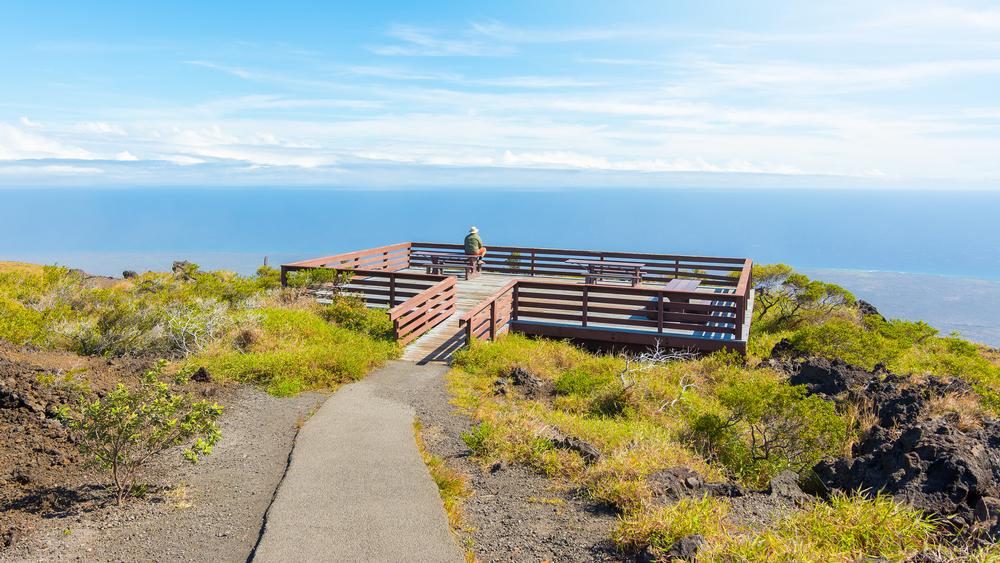Named after Thomas A. Jaggar, a M.I.T. geologist, the Jaggar Museum is only two and a half miles from the visitor center and is the gateway to the Kau Desert Wilderness. The museum's emphasis is on volcanology. There are many displays showing the types of lava, real-time monitors, working "state of the art" electronic seismographs, eruption "by-products," and equipment scientists once used to study the volcano in the past. Several Hawaiian cultural displays showcase the close relationship of the Hawaiian deity of volcanoes, Pelehonuamea.
Visitors will find a spectacular panoramic view of the Kilauea Caldera just outside the museum at the overlook. Halema'uma'u Crater's continuing gas eruption from March 19, 2008 can be seen from the recently renovated overlook. The sight of the erupting crater can be breathtaking on a clear night. The erupting vents were previously 125 feet in diameter before the 2008 eruption. The diameter is now approximately 525 feet.
After an earthquake in 1908 near Mount Etna in Italy that killed 125,000 people, Jaggar stated that "something must be done" to support ongoing, systemic studies of seismic and volcanic activity. In 1909, he traveled to Hawai'i and was approached by Lorrin A. Thurston, who thought that Kilauea was an ideal site for a permanent volcano observatory. Thurston and other businessmen raised the money needed for the Hawai'i Volcano Research Association within a year, and a small observing station was built on the rim of Halema'uma'u Crater. The current site of the Jaggar Museum was built in 1985.


